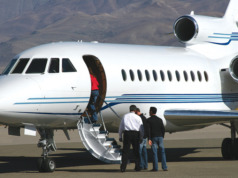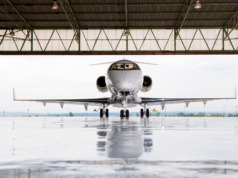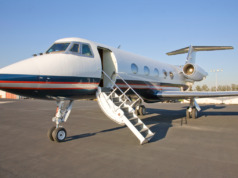
On October 6, 2008, the first morning of the National Business Aviation Association annual convention, major stock exchange indices suddenly began to plummet.
By the time the convention ended three days later, the resulting chaos in the financial world caused lending to dry up. Whereas before, lenders routinely funded aircraft acquisitions at 100% of the purchase price, that practice ended abruptly. Expected residual and collateral values for aircraft costing between $5 million and $65 million declined almost instantly by 25% – and continued to drop for the next several months.
What had been a highly competitive market for lending opportunities now became a virtual financing ghost town. Lenders would fund transactions only for solid current customers, at higher rates for shorter terms, with more restrictive loan terms and conditions, and only for newer and larger aircraft.
And to a great degree, those restrictive lending policies instituted more than six years ago only now are beginning to loosen. Most lenders will lend only for newer aircraft, and for much shorter terms. A popular formula is that the sum of the age of the aircraft plus the term of the loan or lease cannot exceed fifteen years. Down payment requirements are higher and end-of-term balloon payments are smaller. Refurbishment advancements are by far the exception rather than the rule, and “non-recourse” funding is available only at very high rates (See “The Changing Lending Climate,” Business Aviation Advisor September/October 2014).
What was the root cause for this financing disruption? Unlike in the real estate industry, there was no massive number of borrower defaults. Rather, it was due to a sudden flood of business aircraft into the resale market, triggered by two events. The first was the U.S. government’s demonization of corporate jets in response to the heads of the Big Three automakers each flying their own aircraft to Washington for nationally broadcast Senate hearings on their proposed financial bailout. Most publically traded companies scrambled to divest their aviation assets quickly, without regard to potential losses.
Second, plunging corporate profits and the free-falling stock market that did not bottom until May 2009, eliminated demand at the same time that business aircraft supply was near a historic high. The number of medium- to large-cabin aircraft for sale more than doubled virtually overnight.
While actual aircraft loan defaults were not prevalent, lender’s collateral and residual value assumptions were in total disarray. Lenders revalued their assets in a blood bath of “Mark to Market” (fair market) revaluations, creating massive paper losses quarter after quarter. In many cases, the amount of the loan exceeded the market value of the aircraft, creating a negative collateral value.
Keys to effective residual and collateral value risk mitigation are selecting the “right” aircraft (make and model with which the lender is familiar and comfortable) and agreeing on a mutually-acceptable loan or lease structure. This structure very likely will require close monitoring of the status, operation, and maintenance of the aircraft, to reduce collateral value risk and ensure that the aircraft retains the highest possible value, confirmed by periodic professional reappraisal.
Inspections of the aircraft, logbooks, flight operations, insurance coverage, maintenance scheduling, and computerized maintenance systems will be monitored carefully and frequently by the financial institution or its agent. Hourly cost maintenance programs for the engines, airframe, and APU may be required as a condition of the financing.
What is the benefit for you, the owner, lessee, or operators of the aircraft? Careful lender monitoring makes your investment more valuable during and at the end of the transaction term, and allows the lender or lessor to offer you financing at a lower rate and/or under more favorable terms. Until lenders begin to compete actively for new transaction opportunities, this is the new reality of the business aircraft financing market. BAA
Bob Wilke, MBA, is co-founder and Managing Director of AvRisk. With 35 years in aviation finance and consulting, he was a senior manager at JSSI, Boeing, and Bombardier. He teaches Corporate Finance at the university level.




